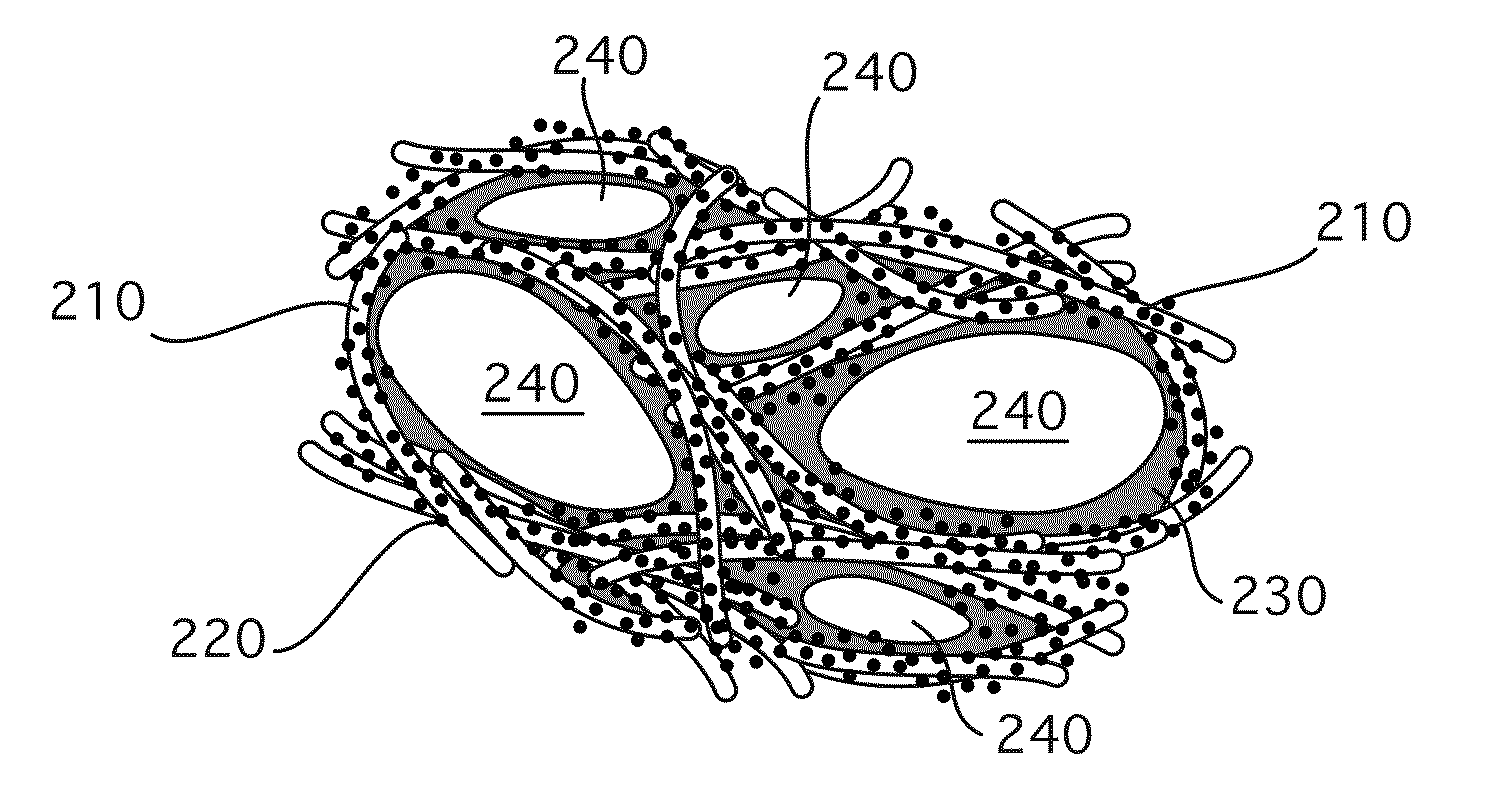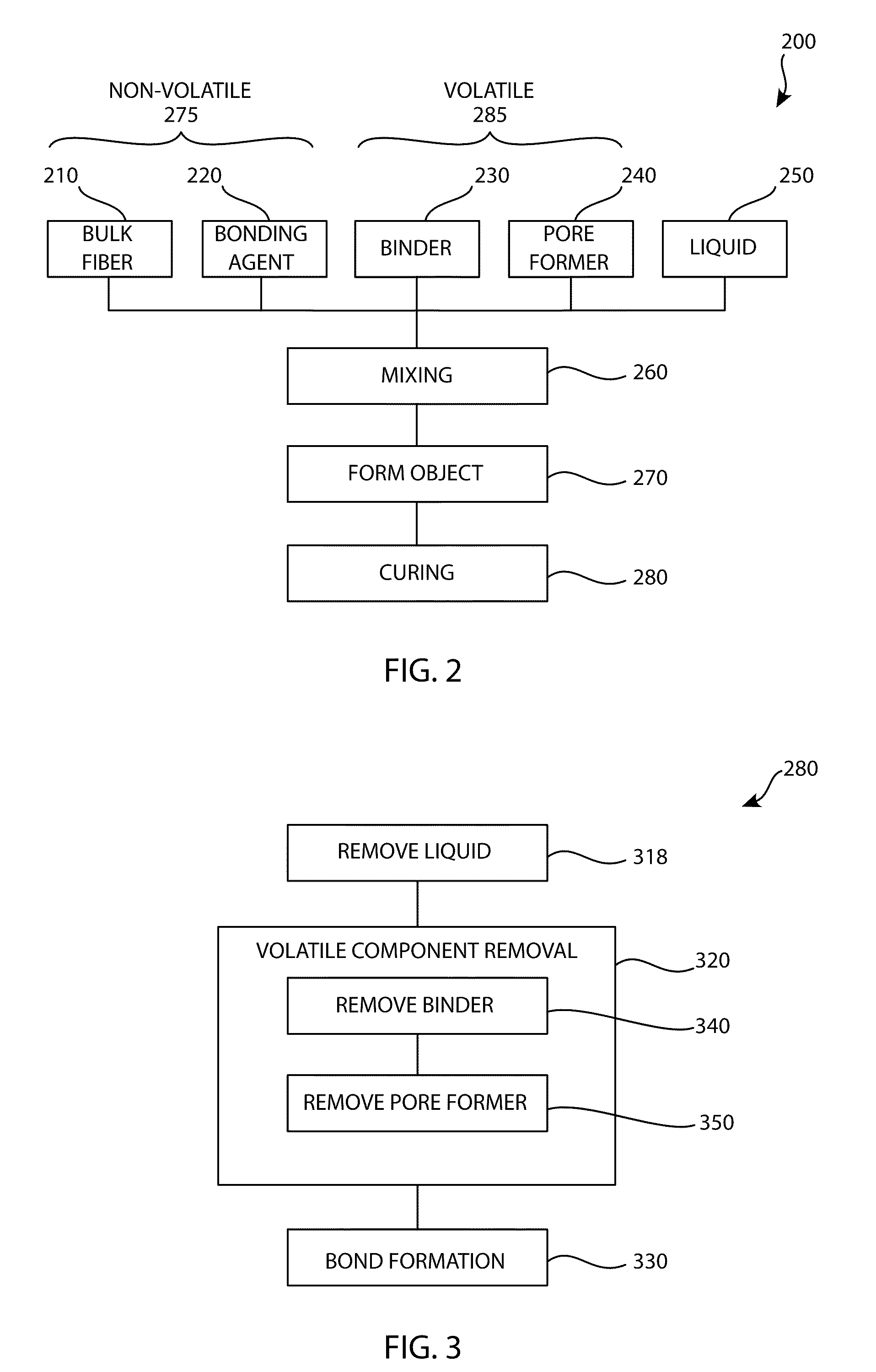Devices and Methods for Tissue Engineering
a tissue engineering and fibrous technology, applied in the field of porous fibrous medical implants, can solve the problems of increasing the risk of infection and unnecessary pain and discomfort at the harvest site, raising the risk of infection and affecting the quality of life of the patien
- Summary
- Abstract
- Description
- Claims
- Application Information
AI Technical Summary
Benefits of technology
Problems solved by technology
Method used
Image
Examples
examples
[0080]The following examples are provided to further illustrate and to facilitate the understanding of the disclosure. These specific examples are intended to be illustrative of the disclosure and are not intended to be limiting in an way.
[0081]In a first exemplary embodiment a resorbable scaffold is formed from 13-93 fiber by mixing 75 grams of 13-93 fiber having an average diameter of approximately 34 μm in bulk form, as the non-volatile components with 16 grams of HPMC as an organic binder and 20 grams of PMMA with a particle size of 25-30 μm as a pore former and approximately 40 grams of deionized water, adjusted as necessary to provide a plastically formable mixture. The mixture was extruded into a 14 mm diameter rod and dried in a microwave dryer. The volatile components were burned out in an air-purged oven and then heat treated at 720° C. for one hour to bond and fuse the 13-93 fiber into the bioresorbable tissue scaffold. The porosity for this example was measured to be 69....
PUM
| Property | Measurement | Unit |
|---|---|---|
| Length | aaaaa | aaaaa |
| Structure | aaaaa | aaaaa |
| Shape | aaaaa | aaaaa |
Abstract
Description
Claims
Application Information
 Login to View More
Login to View More - R&D
- Intellectual Property
- Life Sciences
- Materials
- Tech Scout
- Unparalleled Data Quality
- Higher Quality Content
- 60% Fewer Hallucinations
Browse by: Latest US Patents, China's latest patents, Technical Efficacy Thesaurus, Application Domain, Technology Topic, Popular Technical Reports.
© 2025 PatSnap. All rights reserved.Legal|Privacy policy|Modern Slavery Act Transparency Statement|Sitemap|About US| Contact US: help@patsnap.com



